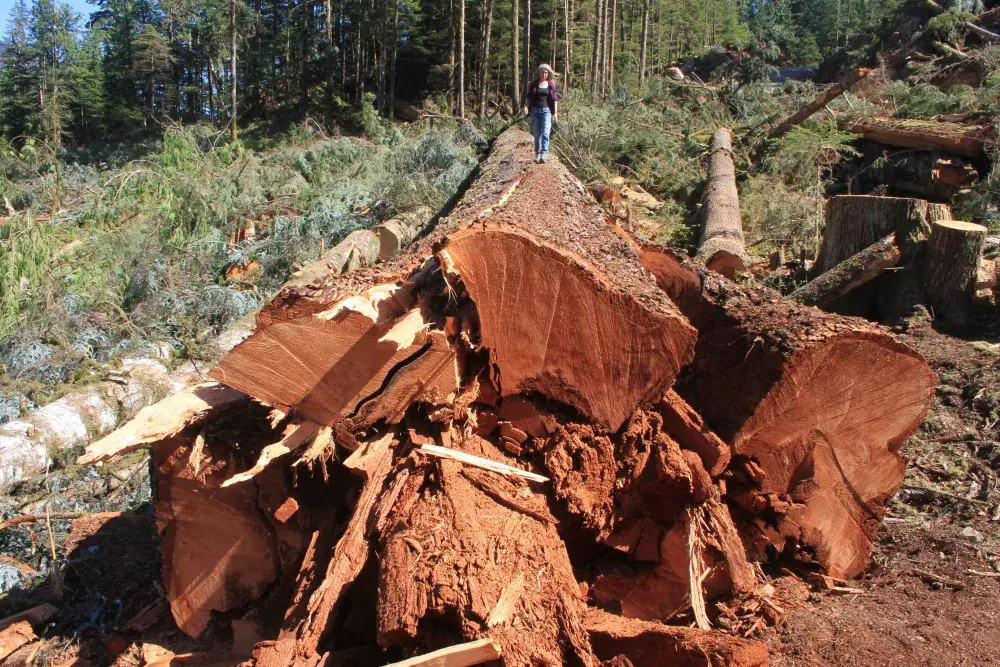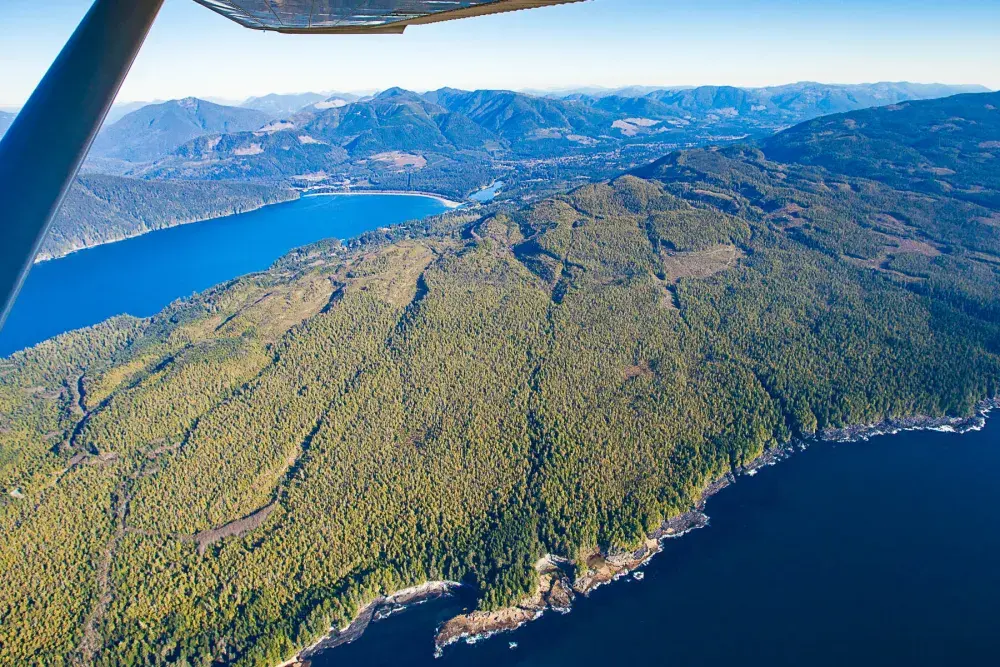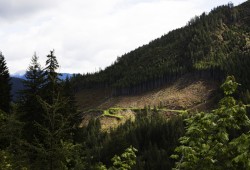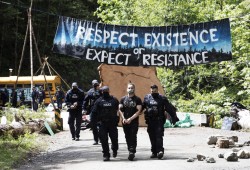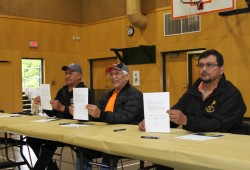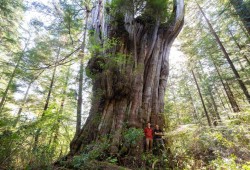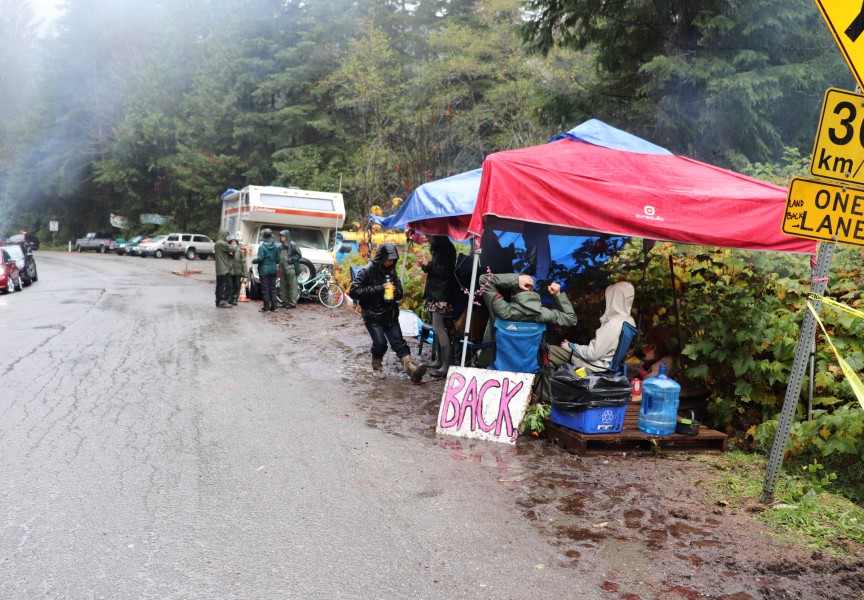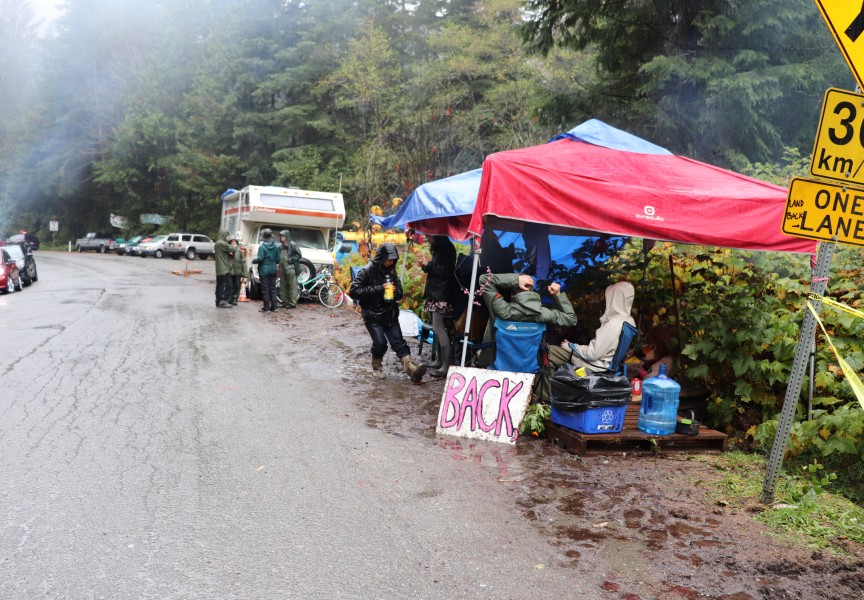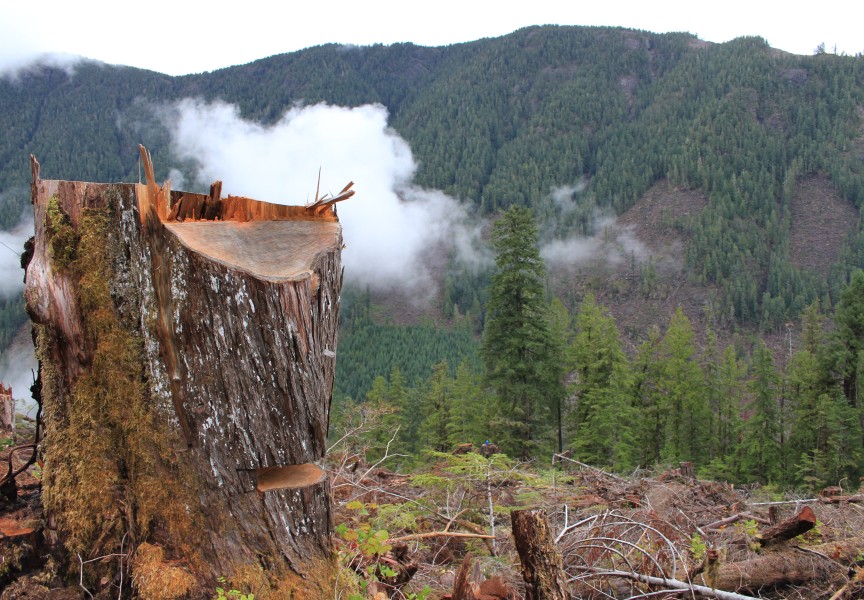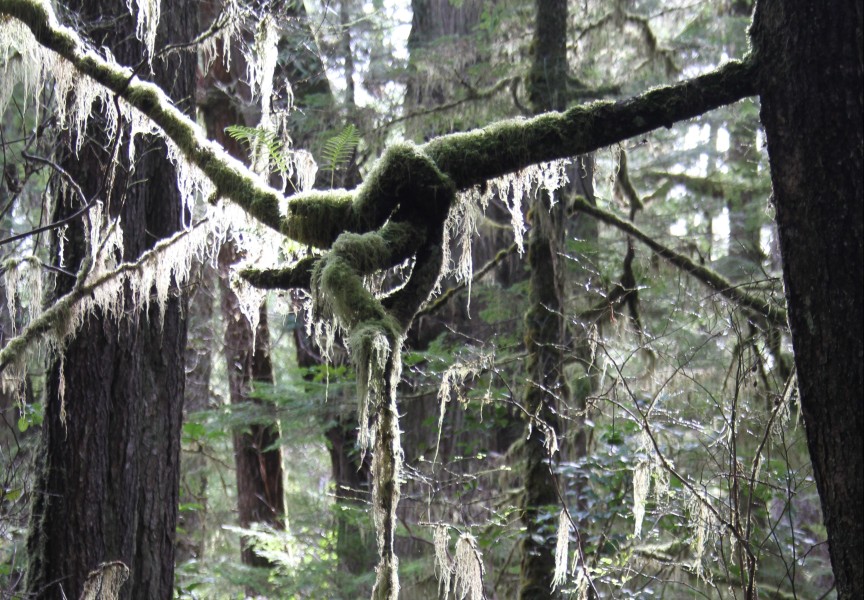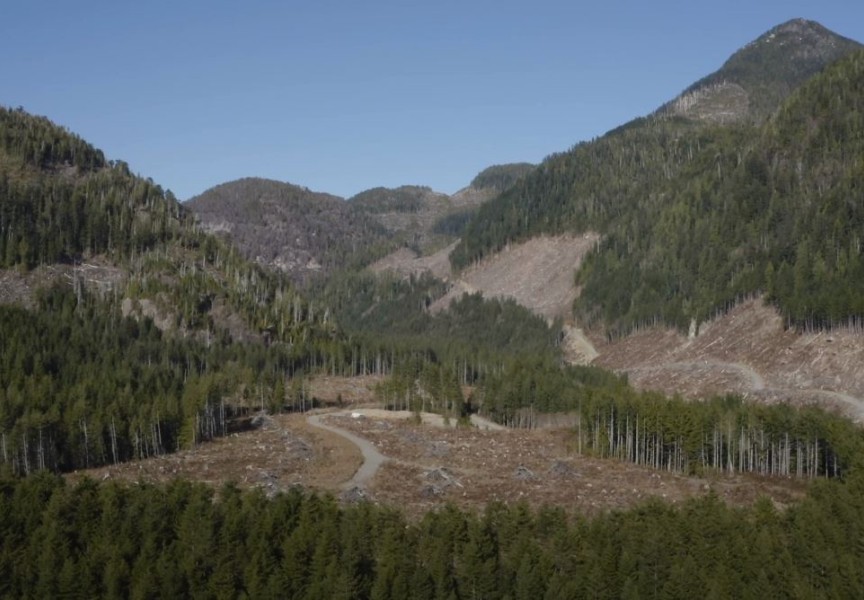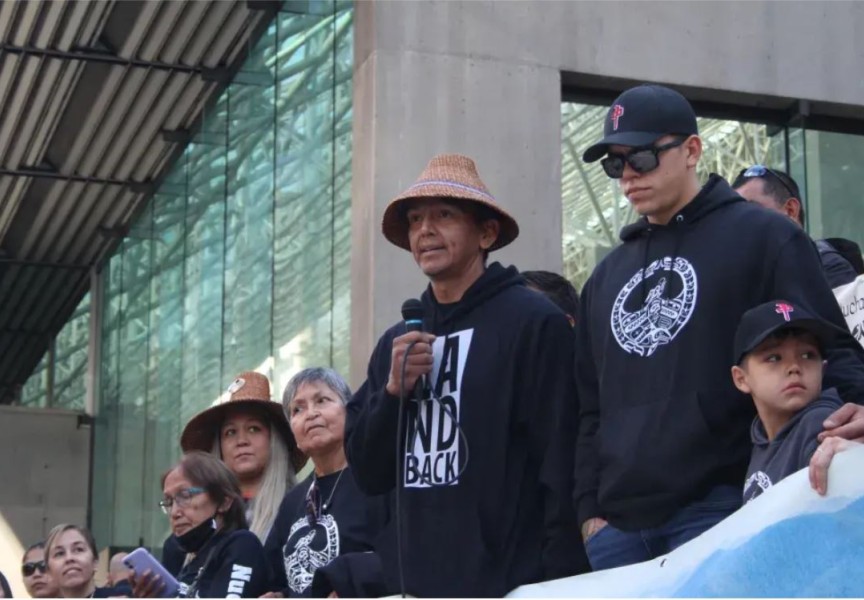The annual allowable cut has been lowered for an area of forest that includes the fiercely contested Fairy Creek watershed, as the volume of old growth being logged in B.C. continues to decline.
The province’s chief forester Shane Berg recently set an annual limit of 360,000 cubic metres of timber for Tree Farm Licence 46, representing a 5.5 per cent reduction in what the annual allowable cut was set at in 2012. This limit means that no more than 180,000 cubic metres of stands older than 250 years can be logged in one year, while that same number also applies to younger trees.
With this announcement the B.C. Ministry of Forests referenced the continued suspension of old growth harvesting in the Fairy Creek watershed and Central Walbran valley, orders that came about in recent years amid a wave of over 1,000 arrests to those claiming to be protecting the areas.
“This new AAC supports old-growth forests, accounts for wildlife habitat retention, visual quality and First Nations cultural heritage resources and practices, while allowing for sustainable harvest levels,” stated a May 28 press release from the ministry. “The determination considers socio-economic factors and interests identified by First Nations, including the protection of cultural heritage resources for cultural survival and the impact of climate change on water, berry gathering and sustenance hunting.”
TFL 46 is a vast section of Crown forest on southwestern Vancouver Island. The 59,432-hectare area includes the territory of nine First Nations: Pacheedaht, Ditidaht, Cowichan Tribes, Halalt, Lyackson, Stz’uminas, Ts’uubaa-asatx, Snuneymuxw and the Penelakut Tribe.
Shortly before this new annual allowable cut was announced the province stated that it’s taking better care of old growth forests than the government has in the past. Its May 21 press release listed the Tripartite Framework Agreement on Nature Conservation, which establishes a federal and provincial fund of up to $1 billion to conserve ecosystem health and biodiversity. Also mentioned are better forestry mapping and “knowledge sharing”, while wood manufacturing is boosted by “making sure forestry communities get more local jobs for every tree harvested.”
The number of trees harvested appears to be declining, following a projected 12-per-cent decrease that was part of the province’s 2022 budget. That plan expected B.C.’s volume of timber to drop from 45 million cubic metres in 2022 to 39.5 million by next year, resulting in an estimated 4,500 lost jobs.
So far this projection appears to be unfolding even more dramatically than expected. The Ministry of Forests cites 37.5 million cubic metres harvested in 2022, followed by just 32.4 million in 2023.
Meanwhile, the volume of old growth being logged has declined as well, according to the ministry’s figures. Old growth harvesting has declined from 66,526 hectares of forest in 2015 to 33,000 hectares in 2022, the last year that has numbers available – showing a 52-per-cent drop.
This trend follows a “widespread lack of public confidence in the system of managing forests,” according to the Old Growth Strategic Review Report, which the province commissioned in 2020.
In May From Review to Action was released, a follow up report to the old growth review. This document pledges to “fundamentally change the way that we view and manage our land and resources”.
“The voice of our forests is growing louder and more urgent, calling out past practices in managing the land and issuing warnings about the impacts of the climate crisis,” stated the follow up report. “There are stark signals, like catastrophic wildfire, and more subtle ones, like the decline of western red cedar across coastal B.C.”
Conflict around the Fairy Creek watershed in recent years is destined to remain in the consciousness of policy makers. Blockades began in August 2020 near Port Renfrew, halting the construction of logging roads into what is believed to be one of Vancouver Island’s few valleys untouched by industrial forestry. Thousands from across Western Canada came to the blockades, resulting in a court injunction against those who interfered with the activities of Teal Cedar Products, which holds tenure over the area of Crown land. RCMP enforcement of the injunction amassed nearly 1,200 arrests in 2021.
Back in 2020 the Old Growth Strategic Review listed 14 recommendations, starting with “the full involvement of Indigenous leaders and organizations” in forestry management. With the Fairy Creek conflict at its peak in June of 2021, the Pacheedaht, Ditidaht and Huu-ay-aht First Nations came forward with the Hišuk ma c̕awak Declaration, an assertion of their territorial authority “to take back their power over their ḥahahuułi”. This declaration came with a call to halt old growth harvesting in the Fairy Creek and Central Walbran valleys until the nations had conducted their own forest stewardship plans.
“From now on our nations will decide what is best for our lands, our waters and our resources for the sustainment and well-being of present and future generations of the three nations,” said Pacheedaht Chief Councillor Jeff Jones when the declaration was announced. “For too many years First Nations have not had jurisdiction over their traditional territory. We must have adequate resources to meet the needs of our citizens, members, for employment, housing, education, health, social and other needs.”
All three nations have forestry operations, including the Huu-ay-aht, which relies on the industry for more than half of annual revenue collected by its group of businesses. The nations asked others to not interfere with their existing forestry operations while the stewardship plans were being formulated.
“While this essential work is being carried out, we expect everyone to allow forestry operations approved by our nations and the government of British Columbia in other parts of our territories to continue without interruption,” the nations said in a statement. “Please respect that our citizens have a constitutionally protected right to benefit economically from our lands, waters, and resources.”
Since November 2021, 2.42 million hectares of B.C.’s forest has either been deferred from harvest of declared permanently protected, adding to the 3.8 million hectares that was already conserved, according to the Ministry of Forests. In June 2023 the government extended a ban on cutting old growth in the Fairy Creek watershed until Feb. 1, 2025, which applies to the 1,183.9 hectares of forest in Pacheedaht territory near Port Renfrew. After this expires, 80 per cent of the area would remain protected, according to the Pacheedaht’s Integrated Forestry Management Plan.
Further north in Nuu-chah-nulth territory, more forest could be slated for permanent protection. In March the province, Ahousaht and Tla-o-qui-aht First Nations announced a proposed 77,000 hectares that could be conserved in TFL 54, the only tree farm licence in Clayoquot Sound. If approved, this would encompass almost 60 per cent of TFL 54, leaving another 55,000 hectares under the existing forestry tenure.

